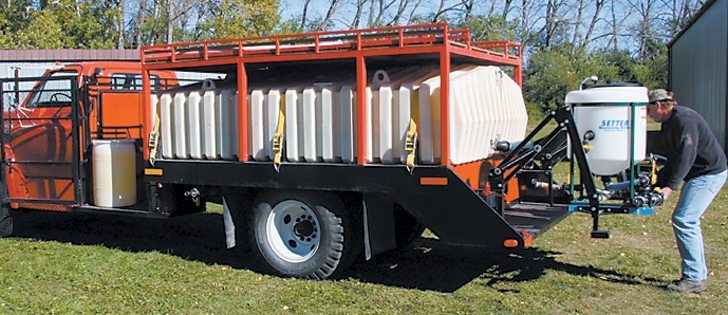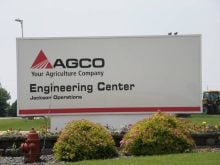Time-saving machine | Sprayer can be filled from the field
ROBLIN, Man. — When Greg Bailes and his father, Frank, learned that the Grandview Fire Department was selling one of its old fire trucks, they realized that with a little work it could be a useful addition to their farm.
Their bid of $4,250 was enough for the 1976 GMC with a 350 cc gasoline engine, 9,300 original kilometres, a 1,200 imperial gallon water tank and a six cylinder engine that drove the fire pump.
Frank said they may have bid higher than they needed to, but they knew the truck and they wanted it.
Read Also

India slaps 30 per cent import duty on yellow peas
India has imposed a 30 per cent duty on yellow pea imports with a bill of lading date on or after Nov. 1, 2025.
“They take care of their stuff,” he said.
“It wasn’t started out in the cold in the winter or anything like that. Or it didn’t sit out in the sun in the summer time.”
Greg did the work himself, including the designing and manufacturing.
He removed the water pump and its engine and designed a lamp-arm inspired frame for a chemical mixing station on the back of the truck.
Greg bought the mixing station from Setter Manufacturing in Russell, Man., for $6,500, which in-cluded a water pump to push to his sprayer.
“It had to clear the lights for going down the road, and to get up and out of the way for when it’s stored in the shed,” Greg said.
“I didn’t want to have to climb up on something with a ladder holding a 20 litre jug to mix. I wanted to do it on the ground where it’s nice and safe, and you can drain it when you need to without it running all over the platform.”
Greg built a steel door between the cab and the water tank where the fire engine water pump used to sit that is strong enough to contain 100-litre barrels of chemical.
His next step, which will complete the project, is to install suction lines from the barrels to the mixing station.
This will reduce how often Greg has to handle 10-litre chemical jugs. As well, some chemicals are cheaper when bought by the barrel.
Greg parks the truck beside a well and water tank when spraying fields close to the farm.
A float operated system keeps the tank full, which allows the well water to warm up before it’s pumped into the truck.
He fills the truck and sprayer at the same time so that the truck is ready to go when he returns to the farm with the sprayer.
He can also bring the truck out to help him finish a field when spraying land that is too far away from the farm to conveniently make multiple trips with the sprayer for filling.
“In the spring, we spray 10 gallons an acre, so if we fill the sprayer before we go to the field, then it’s just one fill from the truck on a quarter,” Greg said.
“In the fall, we’re at five gallons an acre. The sprayer can do an entire field, but if the truck is brought out, it increases how much we can get done before having to come back to the farm.”
It took Greg five days of work, after all the figuring, welding, plumbing and painting, to adopt the fire truck into a useful farm machine.
















